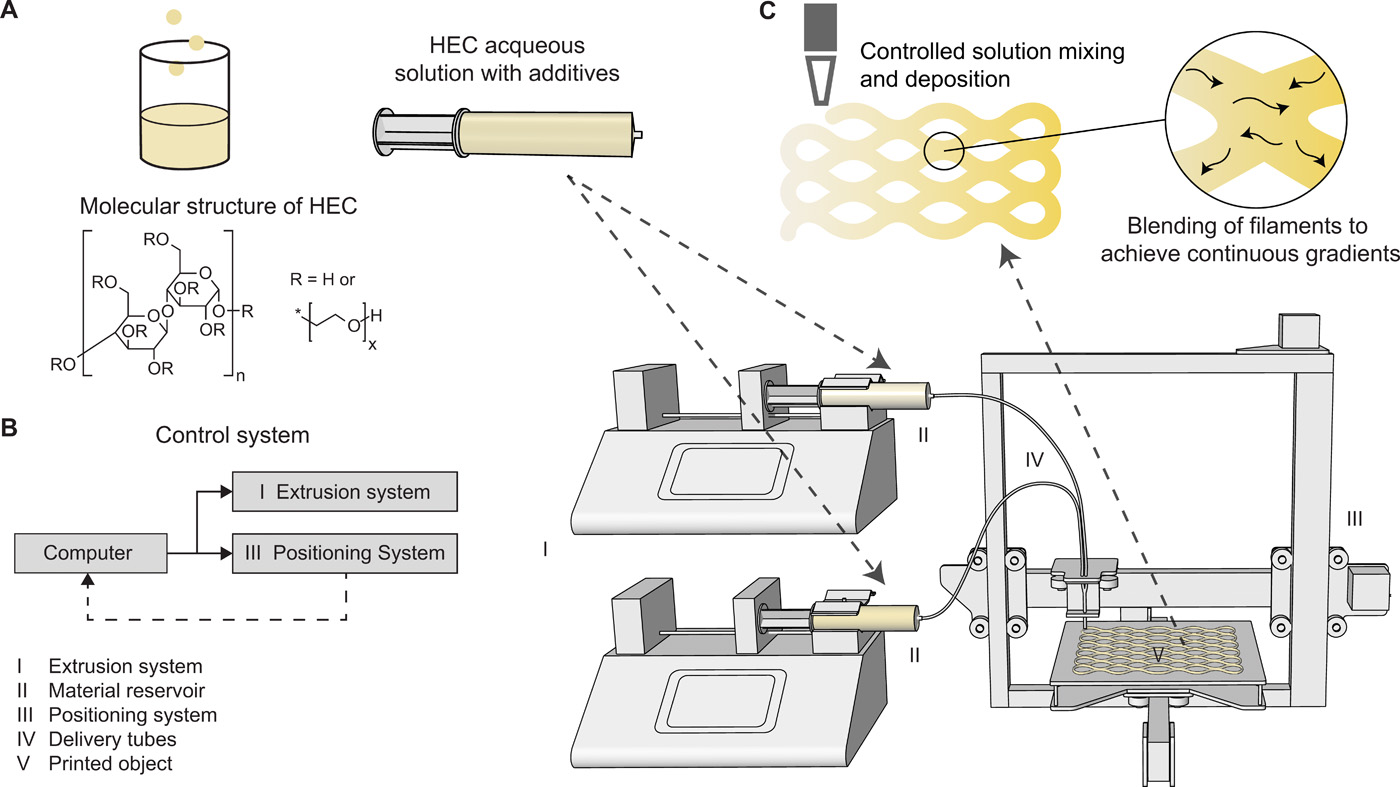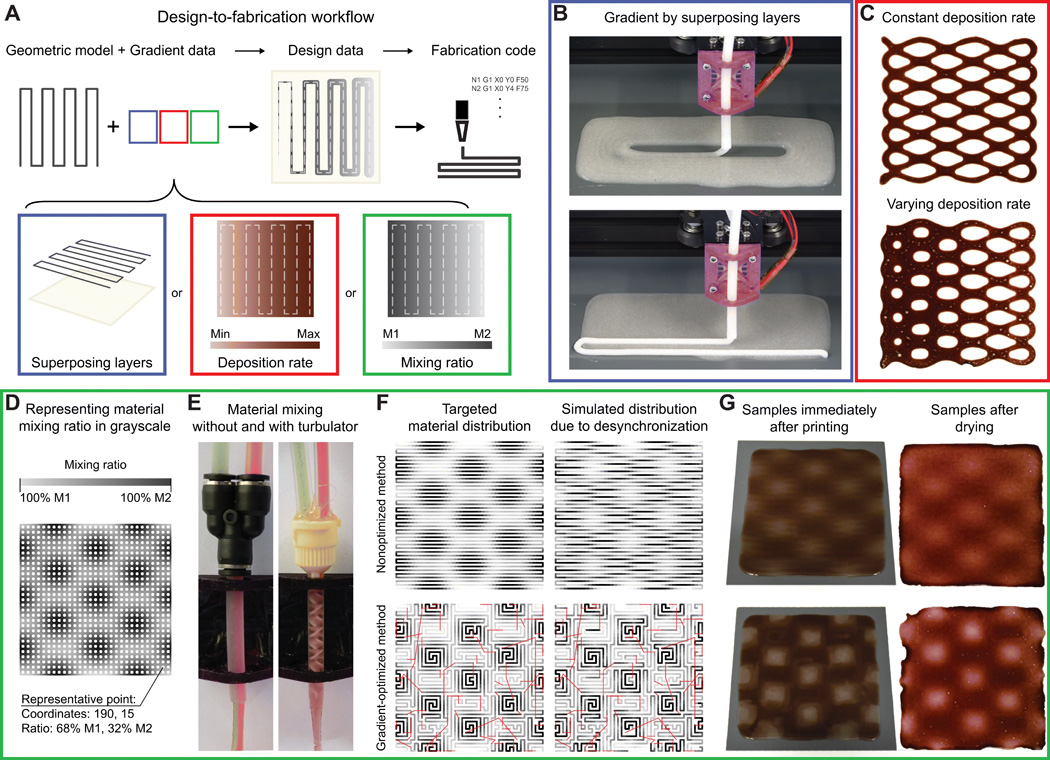A team of researchers from the University of Stuttgart, the University of Virginia, and Koc University, Istanbul, have 3D printed multimaterial parts with multidirectional stiffness gradients. By combining their expertise in materials engineering and digital processing, the researchers were able to create sets of cellulose-based filaments with varying mechanical and rheological properties, despite having similar compositions. The materials were then used in conjunction with each other to program specific deformation profiles into complex parts.

Functionally graded materials
Functionally graded materials (FGMs) have a gradually changing composition or structure – this can be continuous or step-wise. The gradual change results in a ‘property gradient’, whereby a specific property or properties change in relation to the composition or structure. We see FGMs in nature all the time, in a whole host of organisms. The concentration and distribution of a specific functional cell or material type will have a strong influence on the functionality of the location it is in.
In science and engineering, FGMs are useful in thin film coatings, biomedical applications, and architecture. A specific class of FGMs, like the ones this study is concerned with, have varying stiffness gradients. They are typically used to distribute stresses at interfaces, program deformation profiles in soft actuators, and influence the rate of cell migration. The fabrication of FGMs does have its challenges, however, as gradient continuity and directional freedom are difficult to achieve with today’s technology.
3D printing cellulose-based FGMs
With the aim of developing a new method of 3D printing tunable viscoelastic materials with continuous, multidirectional stiffness gradients, the team got to work. Hydroxethyl cellulose (HEC) was selected as a base material due to its environmentally friendly nature. The researchers added citric acid and turned the aqueous solution into a solid hydrogel so it could be extruded. They also found that the addition of lignin significantly increased the stiffness and tensile strength of the hydrogel. Combinations of lignin and citric acid were used as additives to achieve a range of mechanical properties and a set of sample parts were printed – all with varying property gradients.

A custom G-code specifically designed to create a precise stiffness profile in each part was then generated. With carefully controlled extrusion, the team embedded gradient information into the actual designs of the parts. Once printed, the samples could be deformed in unique profiles due the variation in stiffness across the geometry of the parts. Ultimately, the researchers had ‘programmed’ a set of desired deformation geometries in each of the samples.

Further details of the study can be found in the paper titled ‘Additive manufacturing of cellulose-based materials with continuous, multidirectional stiffness gradients’. It is co-authored by P. A. G. S. Giachini, S. S. Gupta, W. Wang, D. Wood, M. Yunusa, E. Baharlou, M. Sitti, and A. Menges.
There is an ongoing stream of research into 3D printing materials, particularly filaments to be used with extrusion-based AM. Earlier this year, in Slovakia, researchers developed a set of new, low-cost hybrid materials for FFF. They reinforced PETG filament with expanded graphite and carbon fiber to enhance its mechanical and thermal properties, branding it as “extremely strong”. Elsewhere, in Greece, researchers have determined the effects of recycling on the mechanical properties of ABS filament.
The nominations for the 2020 3D Printing Industry Awards are now open. Who do you think should make the shortlists for this year’s show? Have your say now.
Subscribe to the 3D Printing Industry newsletter for the latest news in additive manufacturing. You can also stay connected by following us on Twitter and liking us on Facebook.
Looking for a career in additive manufacturing? Visit 3D Printing Jobs for a selection of roles in the industry.
Featured image shows samples with a programmable deformation as a result of a stiffness variation. Image via University of Stuttgart.



